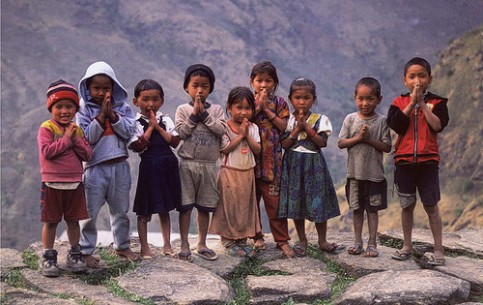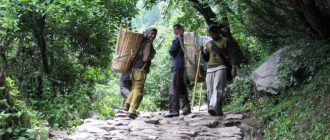Want to know more about the population in Nepal? The following article has some interesting facts and figures about the population in Nepal.
Want to know more about the population in Nepal? The following figures (all approximate) should help to answer some of your questions. The figures are all taken from surveys carried out on the Nepalese population in 2006.
The population of Nepal was estimated at just over 28,000,000 in July 2006. When the population in Nepal was surveyed in 1981, the population was only 15,000,000. The increase in population has therefore been extremely rapid and the government in Nepal are seeking to slow down the rate through economic and social reforms.
58% of the population in Nepal fall primarily into the 15 – 64 year bracket, with 38% in the 0 – 14 year old bracket and only 4% in the 64 years or over category. The median age of the population in Nepal is 20 years and the life expectancy for the Nepalese population is 60 years for both genders. The latter statistic is a significant change from a survey carried out on the population of Nepal in 1981, which concluded that the average life expectancy in Nepal to be 50 years. It is also worth noting that men in Nepal are expected to live slightly longer than women (differing by a decimal point only). This population statistic is an anomaly and hence Nepal is an exceptional case. This situation may be due to a number of reasons, but likely factors include a traditional preference for male to female offspring in Nepalese society, nutritional deprivation and socio norms and values.
The Nepalese population is growing at a rate of 2.17%.
The population in Nepal is made up from diverse ethnic groups. The largest single ethnic group is Chhettri (16%), followed by: Brahman-Hill (13%), Magar (7), Tharu (7%), Tamang (6%), Newar (5%), Muslim (4%), Kami (4%), Yadav (4%) and ‘other’ (34%).
Since Nepal is the only official Hindu state in the world, the majority of the population in Nepal practice the Hindu religion (86% of the population), whilst the remaining religions are represented by Buddhists (8%), Muslims (4%) and ‘other’ (2%).
The population of Nepal is fairly poor with a GNP per head of household of $220. The population is also ageing and since the economic and social reforms referred to earlier in this document are effective then this has further heightened the increasing proportion of elderly people in the Nepalese population.





